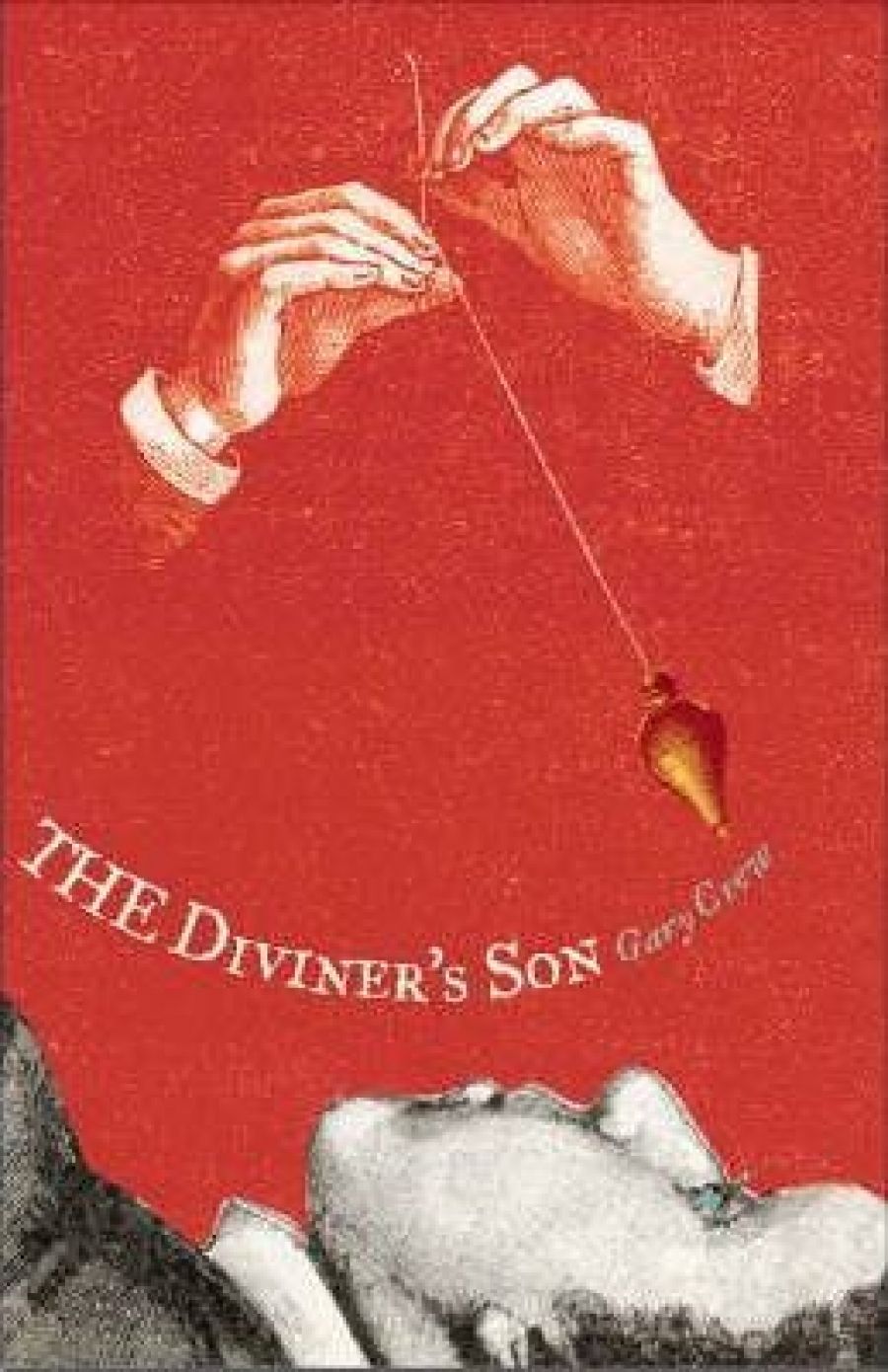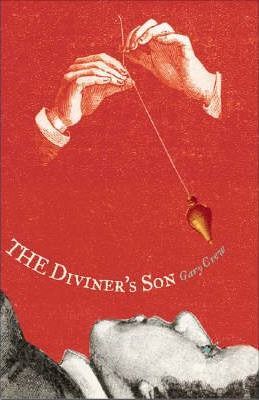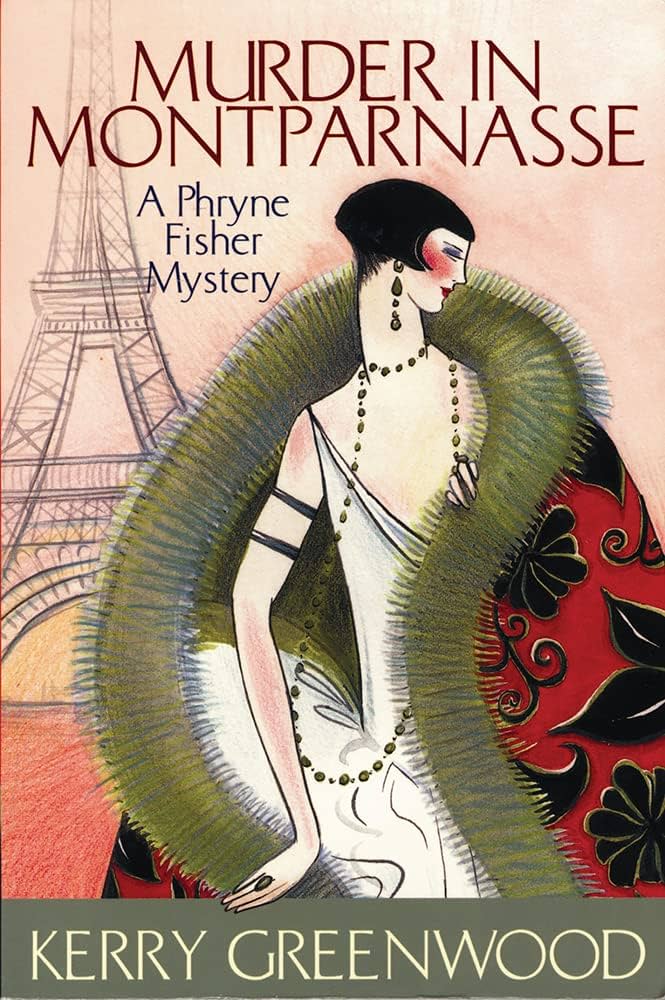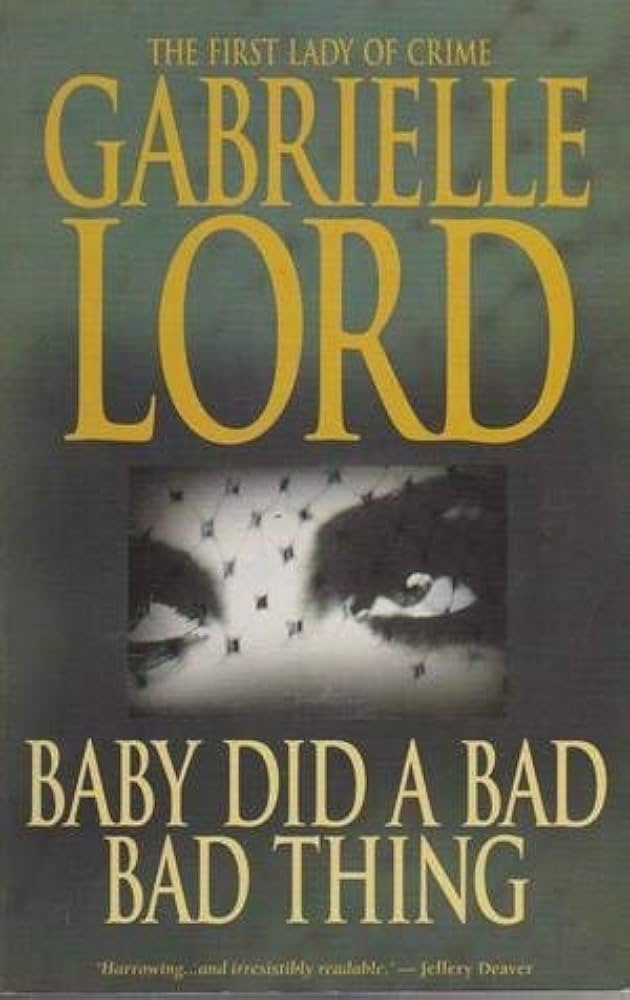
- Free Article: No
- Contents Category: Fiction
- Review Article: Yes
- Article Title: Criminal Pleasures
- Online Only: No
- Custom Highlight Text:
Many sorts of pleasure have been claimed for and by readers of crime fiction: the ratiocinative pleasure of puzzle-solving; the satisfaction of seeing morality prevail and order restored; the perverse enjoyment arising from having our suspicions about the corruption of our society, its leaders and its values confirmed; participation in the wistful hope that actions based on goodness and principle may succeed; reassurance that the domestic lives of our heroes and heroines are just like ours; and, starting with Paul Cain and Raoul Whitfield, Horace McCoy and Jim Thompson, the cold embrace of nihilism and the apocalypse.
- Book 1 Title: The Diviner's Son
- Book 1 Biblio: Pan Macmillan, $14.95 pb, 261pp
- Book 1 Cover Small (400 x 600):

- Book 1 Cover (800 x 1200):

- Book 2 Title: Murder in Montparnasse
- Book 2 Subtitle: A Phryne Fisher Mystery
- Book 2 Biblio: Allen & Unwin, $19.95 pb, 292pp
- Book 2 Cover Small (400 x 600):

- Book 2 Cover (800 x 1200):

- Book 3 Title: Baby Did a Bad Bad Thing
- Book 3 Biblio: Hodder, $29.95 pb, 361pp
- Book 3 Cover Small (400 x 600):

- Book 3 Cover (800 x 1200):

Happily, Kerry Greenwood and her heroine Phryne Fisher simply believe in pleasure full stop, the sort found between indulged connoisseurship and all-out hedonism. Phryne is a perfectly realised fantasy: the acme of beauty, style and grace; wealthy, thus able to indulge her carefully detailed and highly developed taste in all things – food, drink, dress, furnishings, language, men, poetic justice; the cynosure and leader of an extended family that crosses all class and ethnic lines; a no-nonsense amateur detective. She is probably Simon Templar’s long-lost sister: always cool, irreverent, dashing, lippy.
The fantasy plays out in a deeply researched version of Melbourne in 1928 (Greenwood’s detective stories end with bibliographies of historical sources). Murder in Montparnasse has several discrete subplots: the disappearance of a young woman affianced to a much older French chef; the impending marriage of Phryne’s lover, Lin Chung; the suspicious deaths among a group of World War I veterans; and a series of flashbacks to Phryne in Paris at the end of that war (ambulance driver before the Armistice, artist’s model after) that connect her first great love with the unsolved murder of a promising painter. How all these lines connect is another one of the pleasures Greenwood provides, as is, of course, the party Phryne and her friends have to celebrate the successful outcome of the story.
Greenwood is a gifted storyteller with a light, sharp touch, and she is at the top of her form in this novel. Among many tempting quotations from the novel, the following one catches some of its tone and brio. Phryne’s devoted maid, Dot, has ushered a group of men into the parlour to meet with Phryne. Standing outside the closed door, the maid listens:
Dot always worried about Phryne. There had been raised male voices in the refined parlour, and Dot didn’t like it one bit. Raised male voices, in Dot’s experience, preceded raised male fists. And then Miss Phryne might have to hurt someone.
Greenwood provides a cosmopolitan revision of polite 1920s crime fiction within a jaunty prose style.
Gabrielle Lord doesn’t do breezy fantasy heroines. Nor, in the past, has she created a series built around a single character. Baby Did a Bad Bad Thing, however, brings back private investigator Gemma Lincoln from Feeding the Demons. Phryne Fisher is able to sort out other people’s lives because her own is so centred; Gemma Lincoln’s life is collapsing around her and seriously undermining her professional activities.
Gemma employs three operatives in her hi-tech agency. As the novel opens, she is hired to find missing millionaire Benjamin Glass, whose trail involves arson. She is the subject of an unwanted, abusive computer stalker. Off her own bat, she has decided to track down a serial killer of prostitutes by going undercover as a streetworker (this plotline is accelerated when her friend and informant, ex-sex worker Shelly, is murdered, apparently by the same killer). Gemma is anxious about her police detective boyfriend because he is going undercover to penetrate the operations of a mafia kingpin. She begins to question his fidelity as he romances a sexy mafia widow. A feral street child named Ratbag joins the mix. Then all the confidential computer files in Gemma’s business are placed on the Internet, destroying her business credibility, just as she is bidding for a large government contract. Who did this, and why? Are her employees involved?
It all ends with a series of set pieces not so removed from John Woo’s Hardboiled. These serve to cauterise the wounds opened in the course of the novel: whom can you trust, and how far can you trust them? What are the consequences of not trusting the people in your life? How can you move when you are not sure you are right, and what do you do when you have been wrong?
This is a big, busy novel. It may be more than one novel: unlike most crime books, it cannot be adequately summarised on the back cover. Readers will need a tolerance for cute nickname variations on ‘Gemma’ and for sophisticated Sydney women who call each other ‘girl’.
While Greenwood has gloried in a series character and Lord is beginning to dabble with one, the only possible sequel for Garry Crew’s The Diviner’s Son would have to be set in the afterlife or the spirit realm, which doesn’t make a series impossible – just unlikely, in the world of crime fiction. But Crew may not have intended his book to be categorised with crime fiction. It is set in Tasmania in the second half of the nineteenth century. It opens at a local fair and livestock market. Well-to-do, grieving widower Christopher Mansel arrives to sell a horse and, on a whim, looks into a cheap shyster’s ‘diviner’ sideshow tent. He locks eyes with the spruiker’s main attraction, an enslaved ten-year-old boy, Axel, who can read Mansel’s inner feelings and claims to channel the spirit world. These two become the axis of the novel. Mansel’s wife and sixteen-year-old daughter have been murdered in a most bloody fashion, an unsolved crime. Mansel has unfinished business with his dead, not least because he was drunk on the night of the crime and cannot rule out the possibility that he did it – hence his need for a conversational connection to the next world. But Mansel has needs only Axel can see: a therapeutic need to be healed, to rejoin the world, just as Axel comes to need to leave the world.
The novel proceeds, twisting several strands: Mansel’s obsession with Axel; his alienating fixation with the murders; the ongoing criminal investigation and concomitant reconstruction of the murder victims’ lives; and documentation of a case of ghostly night-time rapping in New York in 1848, a counterpoint to the developing supernatural theme of The Diviner’s Son. Crime fiction? Oedipus, Hamlet and South Park contain, and turn upon, murder and crime without joining the genre. The Diviner’s Son is certainly not a standard detective novel: the crime-solving task is spread across several agents in the community – more a case of ‘murder will out’. Dickensian, gothic, and concerned to be a moral exemplum, this is a very Victorian novel in all but, thankfully, the density of prose style.


Comments powered by CComment